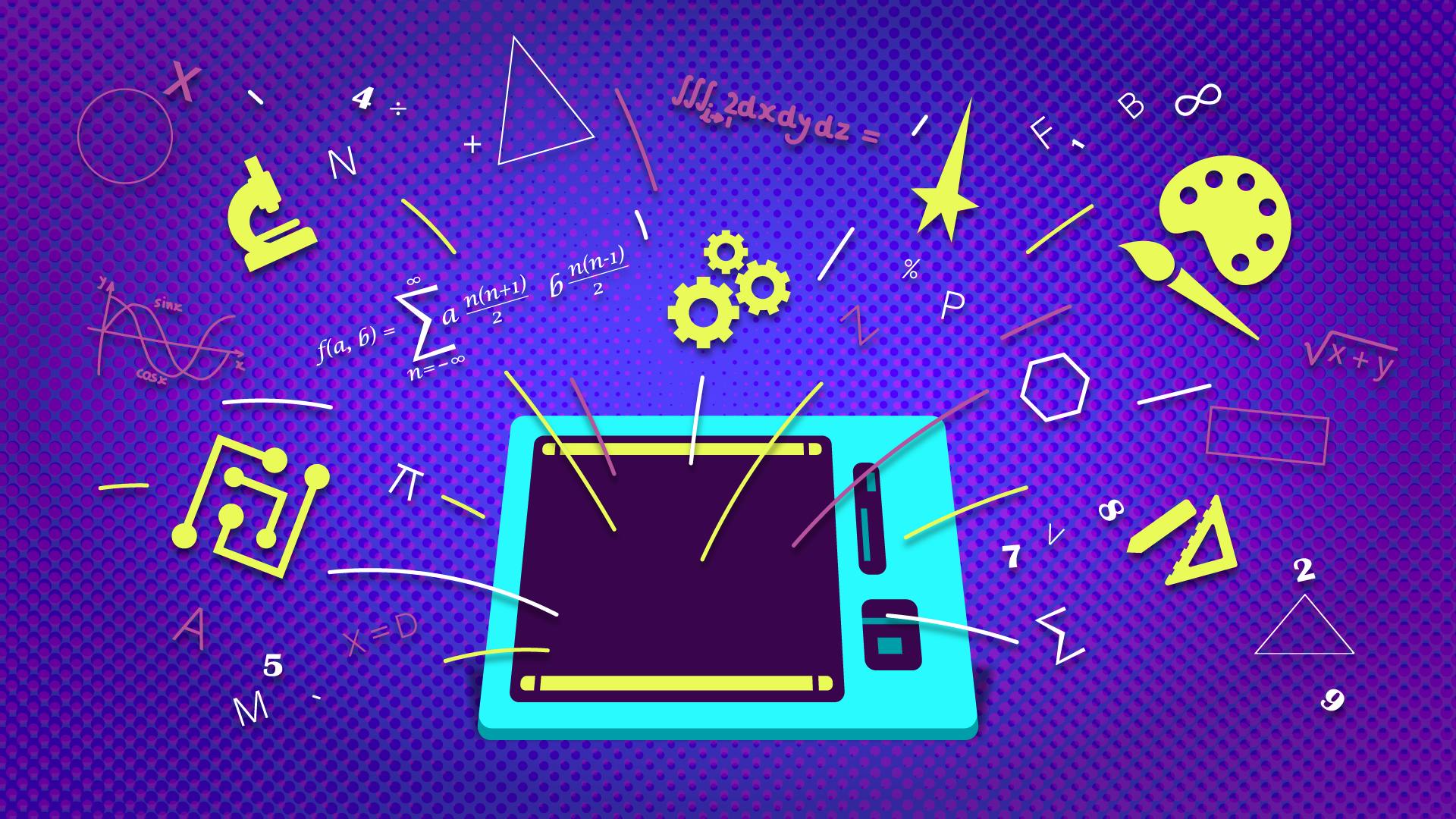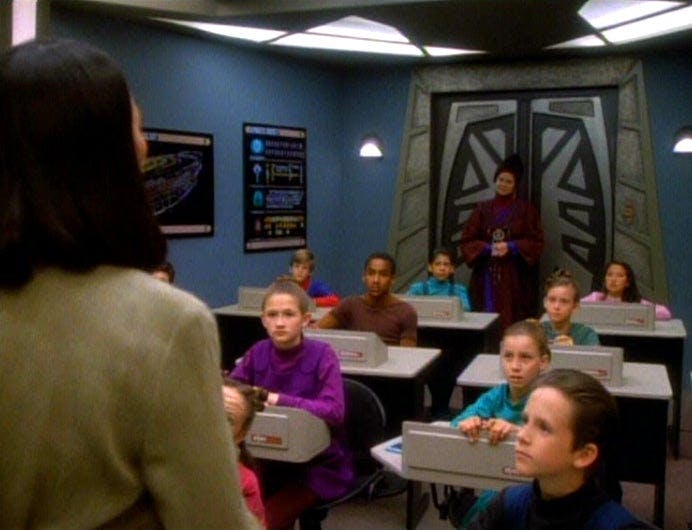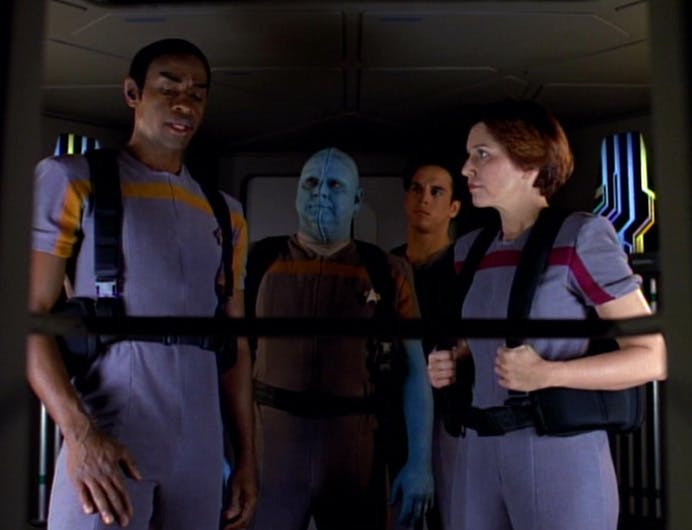Published Sep 6, 2023
Teaching in Trek: A Look at the Education System of the Future
Do the Federation's education systems reflect Star Trek's core values?

StarTrek.com
While Star Trek has certainly made a place for children aboard starships, the idea of teaching in a formal education setting is something that is rarely explored if at all. Throughout Star Trek’s various iterations, we get glimpses into the future’s education systems primarily through the lens of Starfleet Academy with episodes featuring one-off academics or researchers, and just a few plots involving classrooms aboard the U.S.S. Enterprise-D or Deep Space 9. But other than that, we have very little to go on. As an elementary school teacher myself, education in the Star Trek universe is something I’ve always wanted to know more about.
In my profession, we increasingly find ourselves in the position of helping kids navigate what it means to think critically, and to differentiate between what is just and unjust in a world where these ideas seem more and more fleeting every day. The education system has continually grappled with how to combat implicit biases in its programing and in its educators. And speaking for myself and many of my colleagues, the act of curating an inclusive classroom environment where all students feel valued and heard is constantly at the forefront of my mind. Teachers often find themselves at a crossroads between maintaining a status quo that, at best, undervalues and underserves mostly non-white students, or the option of leaning into having the tough conversations, pushing back against inequities, and confronting our own shortcomings. And for a franchise that’s prided itself on progressive values and diverse representations, this feels like an area that’s ripe to dig into.
Star Trek: Deep Space Nine | Keiko O'Brien Finds Her Purpose
Some of the earliest depictions of classrooms in Star Trek come from the era aboard the Enterprise-D. There’s been some discussions about having families aboard a ship that’s bound to get in some space fights, but ultimately, the notion reflects the inherent optimism that Starfleet’s mission is first and foremost a peaceful and exploratory. Throughout the series, we see three primary school teachers — Miss Gladstone (from the Season 2 episode, ""), Lieutenant Ballard (from the Season 3 episode, ""), and Miss Kyle (from the Season 5 episode, “”).
We don’t get much from Miss Gladstone, and pretty much all we see from Ballard is her reluctance to add Lal, a young android, to a class of humanoid children. Miss Kyle features more heavily in her appearance, but still mostly serves as a vehicle for relating Alexander’s struggles fitting in at school to Worf. What ultimately becomes clear (most specifically with Ballard and Kyle) is that the teachers aboard the Enterprise struggle with incorporating diverse learners into their classrooms, even going as far as to suggest alternatives away from the general student population.

"In the Hands of the Prophets"
StarTrek.com
I’ve written more on this specifically in an article for the Star Trek feminist website, Woman at Warp, in the past, but both Ballard and Kyle’s partialities are eerily evocative of the implicit biases that plague our educational institutions today. It mirrors how some in the education field will often struggle to relate to students who are different from them and dismiss cultural differences as either a disability or a behavioral problem that requires segregation from a mainstream classroom. Specifically, we see this in how Black students are three times as likely to be suspended or expelled and two times as likely to be categorized as having an emotional/behavioral disorder as their white peers.
It’s problematic at best, and more realistically, downright harmful.
Later depictions of teachers in Star Trek improved over time – Keiko O’Brien’s classroom was given significantly more development throughout the course of the early seasons than Gladstone’s, Ballard’s, and Kyle’s combined. We still rarely get into the nitty gritty of how she runs her classroom, but in the first season episode, “,” we do see how she makes a point to bring kids of different races together and fights to keep her Bajoran students in her class rather than have them excluded at the behest of Kai Winn.

"Once Upon A Time"
StarTrek.com
A little bit further down the line, on , we see what might come off as a “home-school” education for Naomi Wildman. We see the various crewmembers allowing Naomi to learn from them on the fly, and we see several of the adults coming to terms with including — rather than sheltering her — from important decisions and difficult scenarios that the crew comes across. (Check out the Season 5 episode, “,” for a good example of this!)
Tuvok also plays a large role in the education of Voyager crew. In the first season episode, “,” we see Tuvok — who had experience teaching at Starfleet Academy — struggle to teach a handful of new Maquis crew members who were struggling to adjust to life on a Starfleet vessel. Tuvok, who often comes off as rigid in his views and philosophies, is forced to confront his own biases and better relate what he’s trying teach to those he’s working with. While this isn’t an example of primary education, Tuvok, in a sense, transforms his curriculum to better meet the needs of his students, rather than seeing them only as failures by the end of the episode.

"Learning Curve"
StarTrek.com
In many ways, while they still only scratch the surface, Voyager seems to contain the most progressive portrayals of education that we’ve seen on Star Trek to date.
While some of these stories are certainly better than others, formal education is an area we’ve only seldomly seen Star Trek’s humanist values applied to on screen. To be fair, we’ve gotten brief glimpses of a classroom and school setting in the Star Trek: Short Treks episode, “,” but as of right now, that’s it, and I’m itching to see more!
How could the Star Trek’s progressive philosophies be applied in the classroom? How can teachers of the future have the tough conversations about the state of the galaxy with their students? How are these educators meeting the needs of all their students in a pluralistic Federation? That’s a series – or at the very least another Short Trek – I’d love to see.





